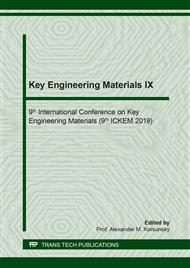p.229
p.237
p.244
p.250
p.256
p.263
p.273
p.280
p.287
Comparison of Predicted Forming Limit Curves with Measured Experimental Data on Hot-Dip Zinc-Coated Cold-Rolled Steel by Incremental Forming Process
Abstract:
Single Point Incremental Forming (SPIF) is a die-less forming process with advantages of high-flexibility, low-cost and short lead time. The high local strains that are applied to the metal sheet, often exceeding the conventional formability limit. This paper is focused on comparison of predicted forming limit curves with measured experimental data on Hot-Dip Zinc-Coated Cold-Rolled sheet, with 0.20 mm thick is studied in single point incremental forming. Truncated square pyramid and cone are formed to study the formability of blank sheets at room temperature. It was found that both Formulation of plastic instability criteria and Keeler’s formula gives the lowest FLC. FLDs have predicted failures in forming process consistently with the real experiments. The experimentally obtained cracking limit differ from analytical one and empirical one by about 3.398 and 2.135 true strain respectively at FLD0, the corresponding plane strain values.
Info:
Periodical:
Pages:
256-262
Citation:
Online since:
September 2019
Authors:
Price:
Сopyright:
© 2019 Trans Tech Publications Ltd. All Rights Reserved
Share:
Citation:


